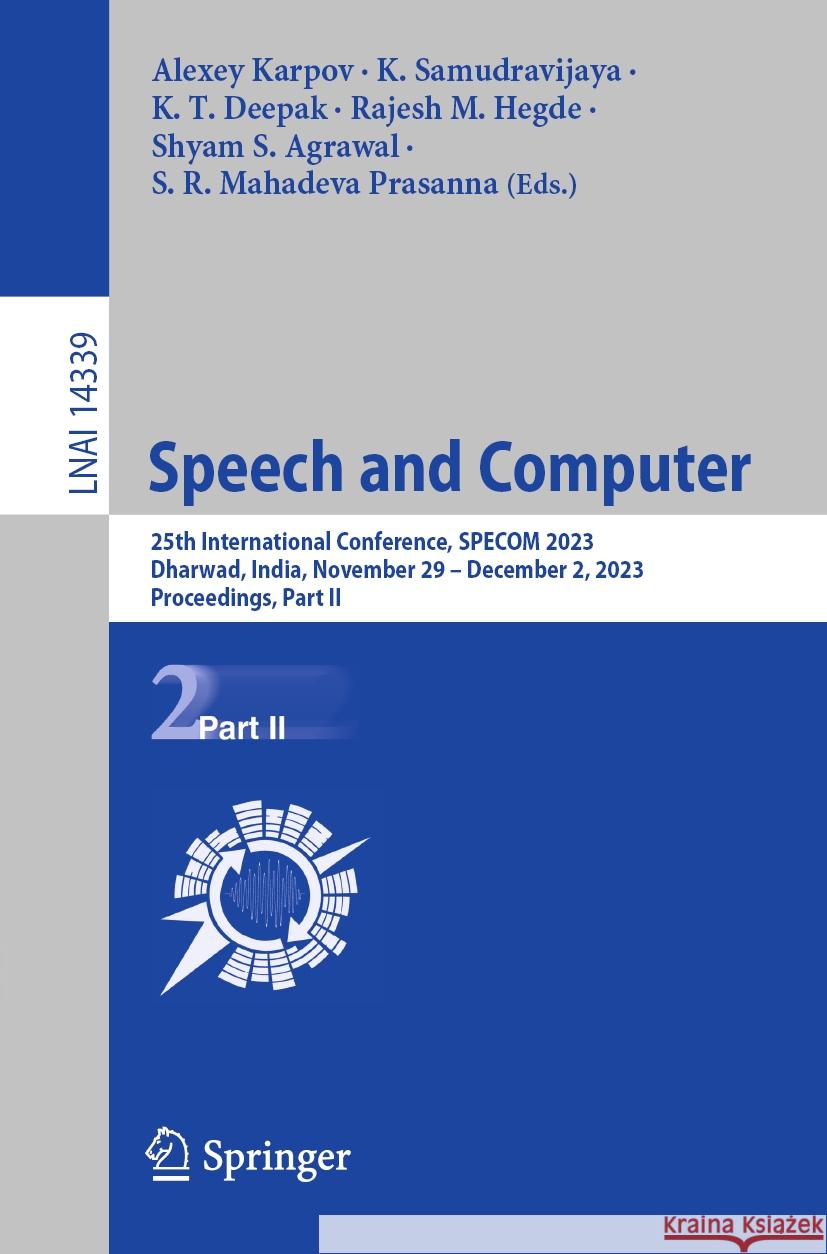Speech and Computer: 25th International Conference, Specom 2023, Dharwad, India, November 29 - December 2, 2023, Proceedings, Part II » książka
topmenu
Speech and Computer: 25th International Conference, Specom 2023, Dharwad, India, November 29 - December 2, 2023, Proceedings, Part II
ISBN-13: 9783031483110 / Angielski
Speech and Computer: 25th International Conference, Specom 2023, Dharwad, India, November 29 - December 2, 2023, Proceedings, Part II
ISBN-13: 9783031483110 / Angielski
cena 362,27
(netto: 345,02 VAT: 5%)
Najniższa cena z 30 dni: 316,12
(netto: 345,02 VAT: 5%)
Najniższa cena z 30 dni: 316,12
Termin realizacji zamówienia:
ok. 22 dni roboczych.
ok. 22 dni roboczych.
Darmowa dostawa!
Kategorie:
Kategorie BISAC:
Wydawca:
Springer
Seria wydawnicza:
Język:
Angielski
ISBN-13:
9783031483110











